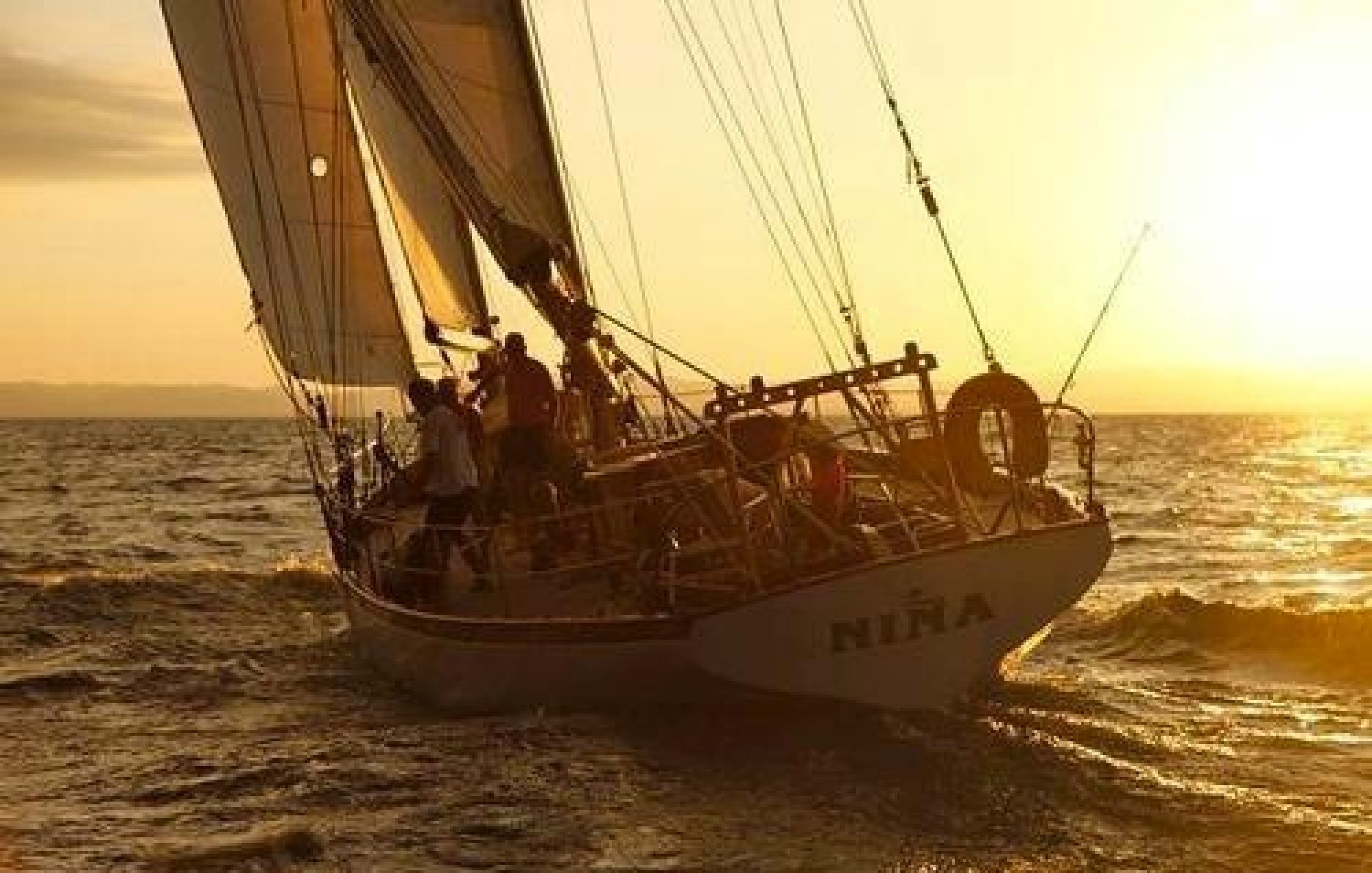Introduction
The Schooner Niña is famous as a boat that transformed ocean racing yacht design. Prior to its construction in 1928, ocean racing was dominated by gaff-rigged ‘fisherman’ schooners, many named after their designer, John Alden. Nina was a narrower and deeper-hulled boat rigged with a Marconi main sail with staysails forward, and it signaled the future of yacht design by winning its first race (New York to Santander) followed in short order by the Fastnet race (in the Irish Sea and English Channel) – the first American yacht to do so.
But the Niña will be remembered for its final voyage, where tragically its crew of seven are presumed to have lost their lives when the Niña disappeared on a voyage from New Zealand across the Tasman Sea to Australia. The largest search in the history of RCCNZ (Rescue Coordination Centre, New Zealand), followed by months of searching organized by relatives of the crew, failed to find any trace of the vessel and crew, or any wreckage. June 4th 2013 marks the date of this greatest loss of life in recreational boating history.
The History of Schooner Niña
Designer: W. Starling Burgess. Built by: Reuben Bigalow Ship Yard, Cape Cod, Massachusetts, USA .
Year Built: 1928 Original Owner: Paul Hammond
Burgess “Nina” Specifications:
Overall length 70’0”/21.33m.
Length on deck 59’0”/17.98m
Water Line length 50’0″/15.24m
Beam 14’10”/4.52m
Draft 9’7”/2.92m.
Displacement 44 tons.
Sail Area: 2,275 sq ft
Foremast: 65′ 0″ / 19.81m – Mainmast: 85′ 0″ / 25.90m
Race history
Known Racing History:
1928 Winner New York to Santander, Spain.
3,900 mile race in 24 days, greeted by King Alfonso from his launch, with “Well sailed, Niña, I congratulate you! I am the King of Spain.”
Niña then went to England for the 600 mile Fastnet Race which takes place through the stormy waters of the English Channel and the Irish Sea. She became the first American yacht to win that race. Her overall time was 4 days, 12 hours, 48 minutes, 13 seconds.
1929 Winner London to Gibson Island Chesapeake Bay.
Niña had one more major win, the 1929 race from London to Gibson Island Chesapeake Bay. She was temporarily retired as owner, Paul Hammond, became involved in the 1930 Americas Cup race.
1939 Winner New York Yacht Club Astor Cup, and 1940 Winner New York Yacht Club Astor Cup.
In 1934, New York banker, DeCoursey Fales bought Niña, and each year of his life he became more and more devoted to her. He would talk for hours about the ‘old girl’. The rest of Niña’s career was probably fore-ordained as she won the New York Yacht Club Astor Cup in 1939 and 1940. Just before WWII, she won for the first time an event that was to become her specialty, the 233 mile Stanford-Vineyard Race on Long Island Sound. Afterward, she was laid up for the duration of the war. Niña was not allowed to rot, however, and she came out after the war in better shape than ever for a three year stint as flag ship for the New York Yacht Club.
1949 Winner Cygnet Cup
Mr. Fales became the NYYC commodore in 1949, and Niña earned her honors by taking first place in ¾ of the yacht club’s squadron races as well as winning the Cygnet Cup in 1949. She made such a habit of winning races that Commodore Fales put the trophies back in competition. It became almost a stock joke that Niña would proceed to win back her own trophies!
1962 Winner Newport to Bermuda Race.
In 1962 to thunderous cheers, Niña, became the oldest yacht at 34 years to win the Newport to Bermuda Race, under 72 year old Commodore Fales (the oldest skipper in the race!). In 1966, then 78 year old Commodore Fales passed away while his crew was attempting to repeat the Bermuda win. Niña had five owners after Fales, one being Kings Point Academy.
1989 Winner New York Mayors Cup
1994 Winner Antigua (Schooner Class)
2012 Winner New Zealand’s 37th Tall Ships and Classic Invitation
Design

Ownership and Restoration, from mid 90’s
Nina was purchased in 1988 by David N. and Rosemary Dyche. They undertook much restoration to the vessel. A new deck took 3 years to complete and was finished in 1997. Photos of some of the restoration can be seen here http://www.sail-world.com/111389.
In September 2008, the Dyche family, including David junior, began circumnavigating.
A replacement engine was fitted and trialled in Opua, shortly before starting the fateful last voyage.
The final voyage
On 29th May 2013, the Historic American Schooner Niña, with a crew of seven, left Opua, New Zealand on a planned voyage to Newcastle, Australia. On 4th June 2013, contact with the vessel was lost.
This treatise documents everything known about the vessel, the crew, the journey, and the search for the vessel following loss of communication.
